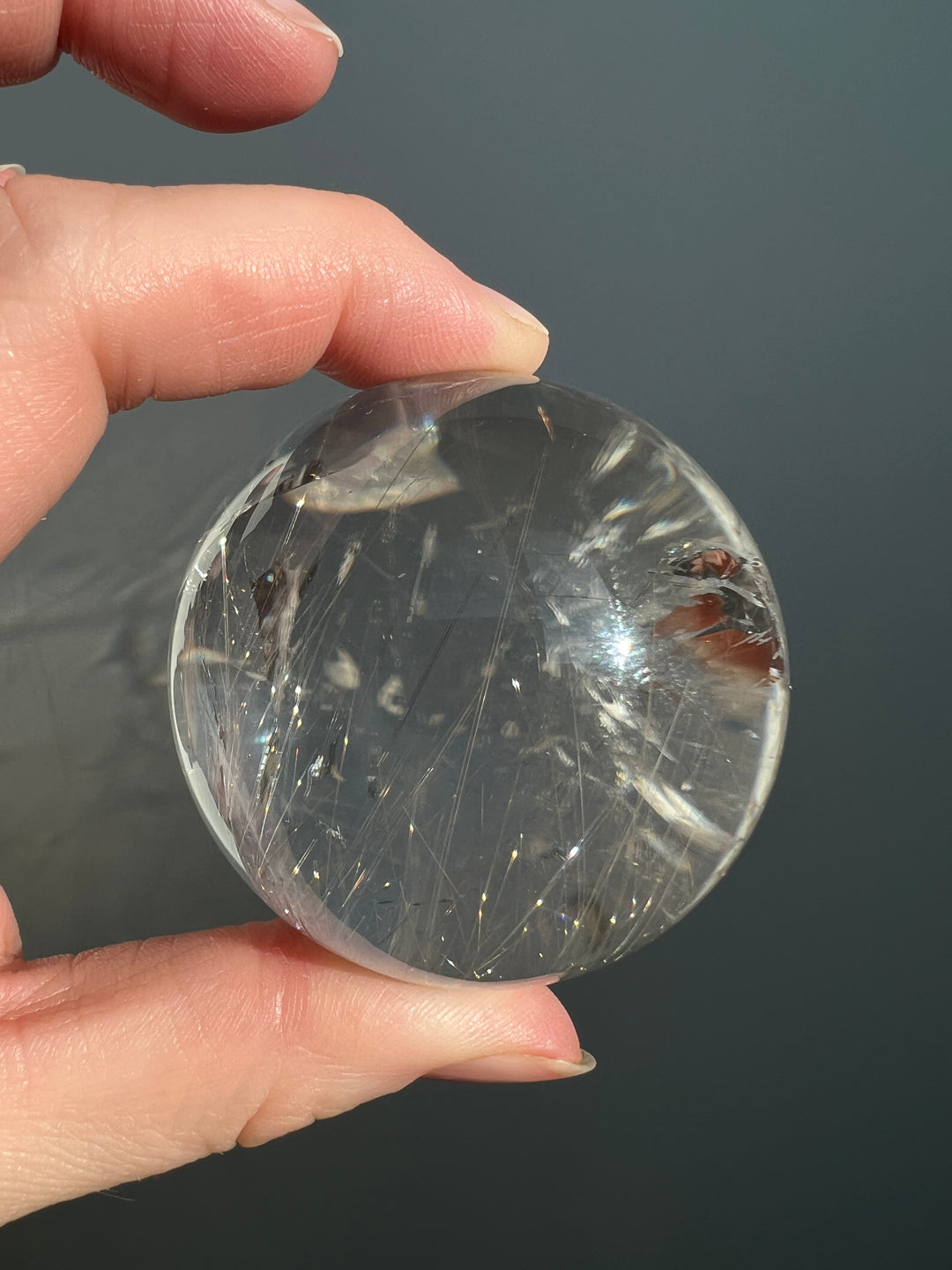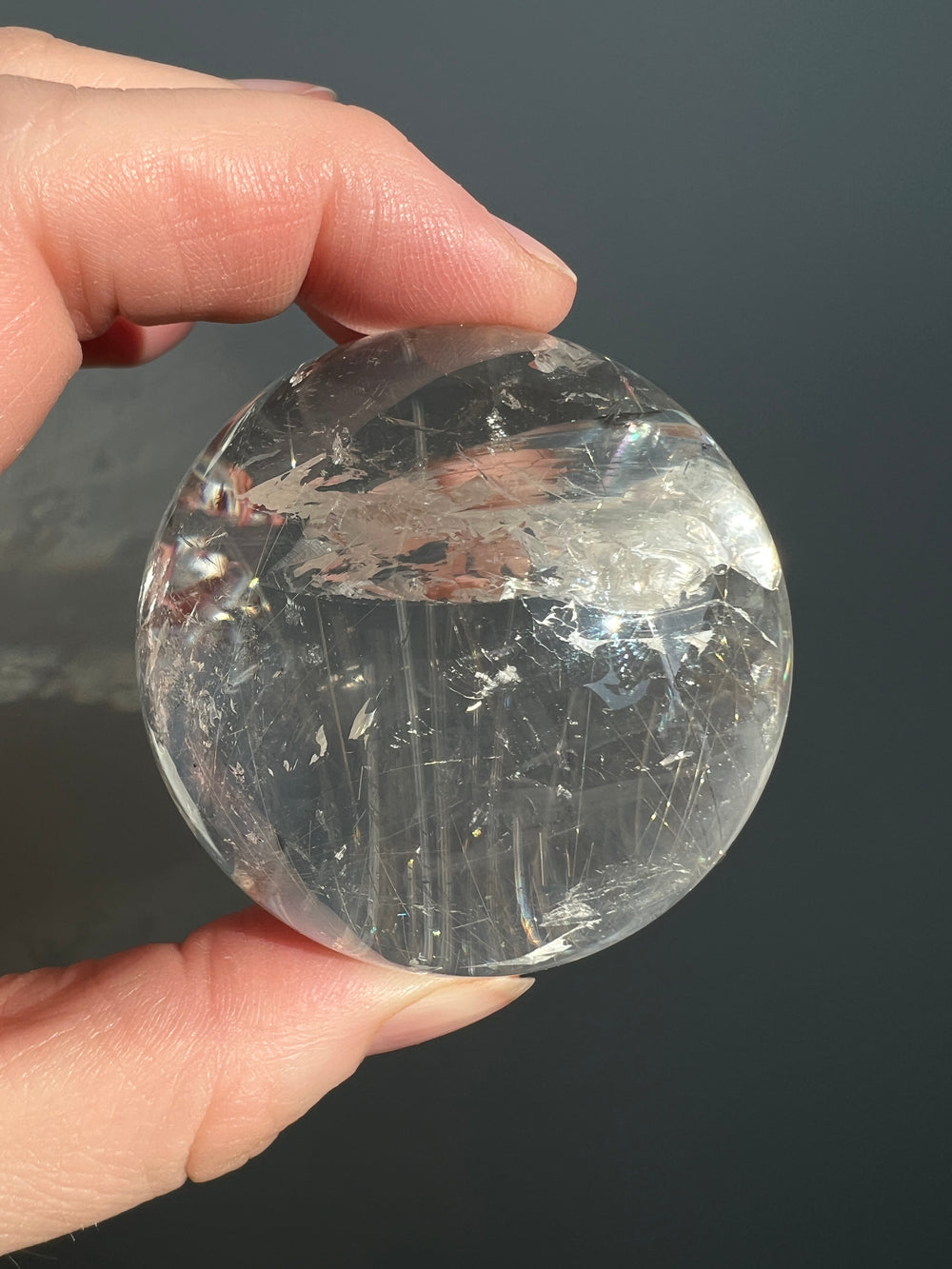Rutilated Quartz | FAQ
Q: What is Rutilated Quartz? A: Rutilated Quartz is a type of quartz that contains needle-like inclusions of rutile, a titanium dioxide mineral. These inclusions typically appear in gold, copper, or silver colors and can be sparse or densely packed, often creating unique, visually striking patterns within the quartz.
Q: What healing properties are attributed to Rutilated Quartz? A: Rutilated Quartz is believed to have powerful healing properties. It's thought to stimulate growth and regeneration, aid in relieving anxiety and depression, and enhance mental clarity and creativity. It's also said to amplify and energize thoughts and intentions.
Q: How can Rutilated Quartz be incorporated into meditation or spiritual practices? A: In meditation and spiritual practices, Rutilated Quartz is used to enhance clarity and insight, facilitate a deeper connection to the spiritual realm, and to amplify energy. It's believed to help in manifesting one's dreams and desires and in accessing higher states of consciousness.
Q: What unique characteristics does Rutilated Quartz possess? A: The most distinctive feature of Rutilated Quartz is the presence of fine, thread-like rutile inclusions. These can vary in color from golden to reddish-brown, black, or rarely greenish. The patterns formed by these inclusions are unique to each piece.
Q: What is the Mohs hardness of Rutilated Quartz? A: Rutilated Quartz, like other quartz varieties, has a Mohs hardness of 7, making it relatively durable and suitable for various applications, including jewelry.
Q: Is Rutilated Quartz suitable for use in jewelry making? A: Yes, Rutilated Quartz is frequently used in jewelry. Its intriguing appearance makes it a popular choice for rings, pendants, earrings, and other jewelry items. It can be cut into various shapes and sizes to showcase the rutile inclusions.
Q: How should Rutilated Quartz be cared for and cleaned? A: Rutilated Quartz should be cleaned with lukewarm soapy water and a soft brush. It's important to avoid harsh chemicals and extreme heat, which could damage the quartz or alter the appearance of the rutile inclusions.
Q: What significance do the color and patterns of Rutilated Quartz hold? A: The golden or coppery threads of rutile within Rutilated Quartz are often associated with wealth, abundance, and strength. They're believed to carry a powerful energy that amplifies the properties of quartz, promoting clarity, spiritual growth, and transformation.
Q: What metaphysical properties are associated with Rutilated Quartz? A: Metaphysically, Rutilated Quartz is considered a stone of illumination, enhancing intuition, spiritual communication, and guided direction. It's believed to accelerate the manifestation of intentions and to cleanse and energize the aura.
Q: What are the geological properties of Rutilated Quartz? A: Geologically, Rutilated Quartz forms when quartz crystals grow in close proximity to rutile deposits, incorporating the rutile into their structure as they crystallize. This usually occurs in igneous and metamorphic rocks.
Q: Can you explain the scientific properties of Rutilated Quartz? A: Scientifically, Rutilated Quartz is a combination of quartz (silicon dioxide) and rutile (titanium dioxide). The rutile inclusions often form in acicular (needle-like) crystals within the quartz.
Q: What is the mineral composition of Rutilated Quartz? A: The primary component of Rutilated Quartz is silicon dioxide (SiO2), with the inclusion of titanium dioxide (TiO2) in the form of rutile.
Q: Does Rutilated Quartz fade or change color over time? A: Rutilated Quartz is generally stable and does not fade easily. However, as with all quartz, it should be protected from excessive exposure to direct sunlight and harsh chemicals.
Q: How can I distinguish between real and fake Rutilated Quartz? A: Real Rutilated Quartz has a unique appearance with natural rutile inclusions that can vary in color, thickness, and pattern. Fakes may use synthetic fibers or imitations that lack the natural, varied appearance of genuine rutile inclusions.
Q: How is Rutilated Quartz formed? A: Rutilated Quartz forms when quartz crystalizes in the presence of rutile, often in igneous or metamorphic environments. The rutile inclusions grow within the quartz, becoming encapsulated as the quartz crystalizes.
Q: Are there different types or variations of Rutilated Quartz? A: Variations in Rutilated Quartz involve the color, thickness, and density of the rutile inclusions. Some may have sparse, fine golden needles, while others have dense, thick, or even black or greenish strands.
Q: What's the historical significance of Rutilated Quartz? A: Rutilated Quartz has been valued throughout history for its unique beauty and supposed metaphysical properties. It has been used in various cultures for ornamental and healing purposes.
Q: What is the origin of Rutilated Quartz? A: The term "Rutilated" refers to the rutile inclusions within the quartz. This variety of quartz is found in several countries, including Brazil, Australia, Kazakhstan, Madagascar, Norway, Pakistan, and the United States.
Q: Where is Rutilated Quartz typically found? A: Rutilated Quartz is found in quartz deposits worldwide, especially in areas with high rutile concentrations. Significant sources include Brazil, Australia, and the United States.
Q: How rare is Rutilated Quartz? A: Rutilated Quartz is relatively common, but specimens with unusual or particularly aesthetic patterns of rutile inclusions can be rare and highly prized by collectors and gem enthusiasts.









